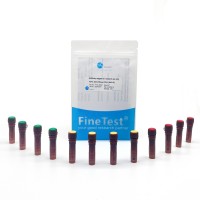Characterization of HLA-DQ-Specific Peptide-Binding Motifs
互联网
798
Several immunological disorders display a striking association with particular HLA alleles. Although the basis for these HLA-disease associations is not completely understood, it is likely that peptides bound to the disease-associated molecules play a role in pathogenesis. The function of HLA molecules is to bind and present peptide antigens to T-cells. Because of polymorphisms in the peptide-binding site, different HLA molecules bind different sets of peptides since the polymorphic residues within the binding pockets of the HLA molecule determine which amino acid side chains can be bound. Such preferences for certain amino acids (anchor residues) at particular sites in the HLAbound peptide determine the so-called allele-dependent peptide-binding motif (for a review see ref. 1 ). Such a motif can be used to predict whether a particular peptide will bind to a given HLA-molecule. The characterization of the peptide-binding motifs of disease-associated class II molecules, therefore, can be a useful tool to identify potential disease-inducing peptides and antigens. Peptide-binding motifs can be defined using different approaches:
| 1. |
Characterization of naturally processed HLA-bound peptides (2 –8 )
|
| 2. |
Analysis of large peptide pools from M13 bacteriophage peptide display libraries (9 ) or synthetic peptide libraries (10 –12 )
|
| 3. |
Analysis of peptide-binding requirements in assays using peptide analogs with single amino acid substitutions (13 –15 ).
|









